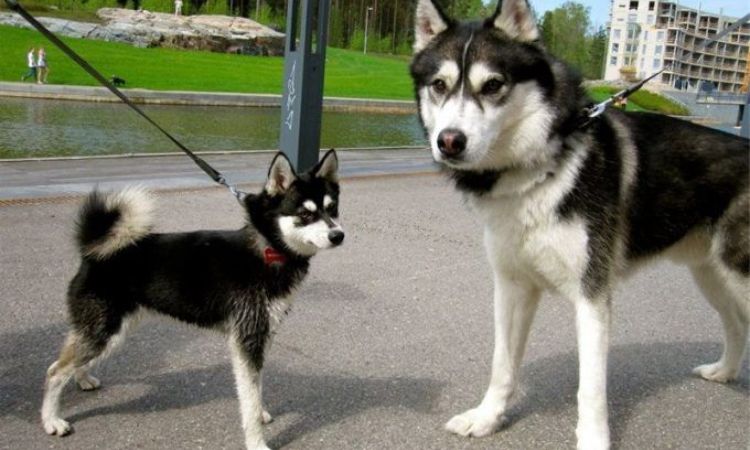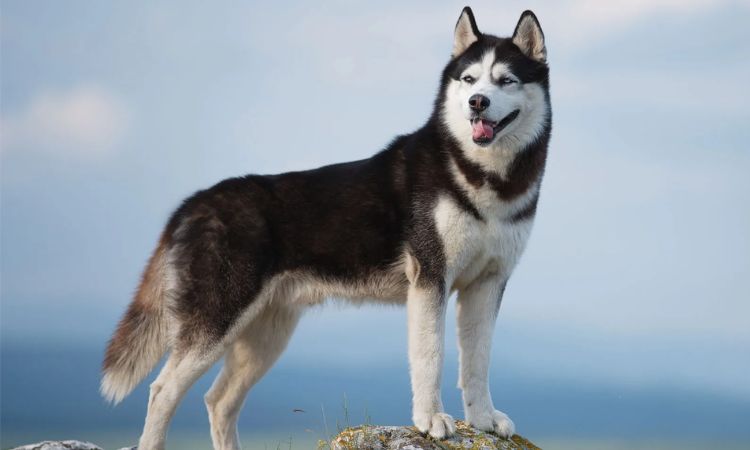At first glance, the Alaskan Klee Kai and the Alaskan Husky might look like close cousins—both sporting that signature northern coat and piercing gaze. But beyond the similar appearance lies a world of differences in size, personality, and purpose. In this guide from Nexus-Pets, we’ll take a closer look at these two Alaskan natives to help you understand what truly sets them apart.

Size Categories Explained
When it comes to understanding dog sizes, classifications are typically based on two main factors: height at the shoulders and overall weight. Small dogs generally weigh under 20 pounds, medium-sized dogs range from 20 to 50 pounds, and large dogs usually exceed 50 pounds. However, breed-specific standards can further refine these categories, especially for breeds like the Alaskan Klee Kai, which are intentionally bred in different size classes.
The Alaskan Klee Kai is uniquely divided into three official size categories, recognized by breed clubs and enthusiasts alike:
- Toy: Under 13 inches tall at the shoulder and typically weighing less than 10 pounds.
- Miniature: Between 13 and 15 inches tall, with a weight range of 10 to 15 pounds.
- Standard: Between 15 and 17 inches tall, usually weighing between 16 and 22 pounds.
These size divisions allow potential owners to choose a Klee Kai that fits their living space and lifestyle. Despite the size difference, all three types share the same alert personality and striking appearance.
The Alaskan Husky, on the other hand, doesn’t fall into size subcategories. This is a working dog rather than a standardized breed, so size can vary depending on lineage and function. However, most adult Alaskan Huskies fall within a consistent size range:
- Males: Typically weigh between 40 and 60 pounds and stand about 23 to 26 inches tall.
- Females: Slightly smaller, usually weighing 35 to 50 pounds and standing 20 to 24 inches tall.
Unlike the Klee Kai, the Husky’s size is more uniform, reflecting its purpose as a durable sled dog built for speed, stamina, and teamwork rather than fitting into compact urban homes.
Alaskan Klee Kai Size Details

The Alaskan Klee Kai is a compact, well-proportioned breed available in three size categories, making it an appealing choice for a variety of living situations—from apartments to larger homes. Each size type is defined by specific height and weight ranges, measured from the ground to the top of the shoulders (withers).
Size Categories
- Toy: Up to 13 inches tall; typically weighs between 8–14 pounds.
- Miniature: Over 13 inches and up to 15 inches tall; usually weighs 13–18 pounds.
- Standard: Over 15 inches and up to 17 inches tall; weight generally ranges from 17–22 pounds, although some may reach up to 25 pounds depending on build and genetics.
These categories help prospective owners better select a dog that fits their lifestyle, whether they’re looking for a tiny lap companion or a more robust, agile playmate.
Comparison Table
| Size Category | Height | Weight |
| Toy | Up to 13 inches | 8–14 pounds |
| Miniature | Over 13 to 15 inches | 13–18 pounds |
| Standard | Over 15 to 17 inches | 17–22 pounds (up to 25) |
These three size distinctions are unique to the Alaskan Klee Kai and play a key role in how the breed is registered and evaluated by clubs like the Alaskan Klee Kai Club of America (AKKCOA). Despite their size differences, all three variations share the same arctic-inspired appearance, spirited personality, and loyal temperament.
Husky Size Details

Siberian Huskies are medium-sized working dogs known for their endurance, agility, and striking appearance. Their size varies somewhat between males and females, reflecting typical sexual dimorphism seen in many breeds.
- Male Siberian Husky: Males typically stand between 21 and 24 inches tall at the shoulder and weigh between 45 and 65 pounds. They tend to have a sturdy, muscular build suited for pulling sleds and enduring harsh climates.
- Female Siberian Husky: Females are generally smaller, standing around 20 to 22 inches tall and weighing between 35 and 50 pounds. Despite being smaller, females share the same athletic and resilient qualities as males.
In addition to height, Siberian Huskies also have a slightly longer body length compared to their height, giving them a well-balanced and agile frame. Their weight range and build enable them to perform intense physical activity, such as sled pulling, while maintaining speed and stamina.
Visual Size Comparison
When standing side by side, the size difference between the Alaskan Klee Kai and the Siberian Husky is immediately noticeable. The Alaskan Klee Kai, especially in its toy and miniature varieties, appears much smaller and more compact. Even the standard Klee Kai is considerably shorter and lighter compared to the larger, more robust Siberian Husky.
The Siberian Husky’s height ranges from 20 to 24 inches, with a weight between 35 and 65 pounds, giving it a strong and muscular presence. In contrast, the Alaskan Klee Kai stands between 10 to 17 inches tall and weighs only 6 to 25 pounds, depending on the size category. This makes the Klee Kai resemble a miniature version of the Husky, with similar markings but a clearly smaller frame.
Because of their smaller stature and lighter weight, Alaskan Klee Kais are generally better suited for small apartments or homes with limited space. They require less room to move comfortably and can adapt well to indoor living, provided they receive sufficient exercise. Siberian Huskies, on the other hand, thrive in larger spaces where they can run and expend their high energy levels, making them less ideal for compact living environments.
In conclusion, while the Alaskan Klee Kai may look like a miniature Siberian Husky, their differences in size, temperament, and exercise needs are significant. By understanding these distinctions, prospective owners can make an informed decision and choose the breed that is the best fit for their home and lifestyle.






